Ramping up infrastructure improvements at UND Flight Ops
Flight training program’s continued success depends on sturdy ramps, runways and facilities, faculty and staff say
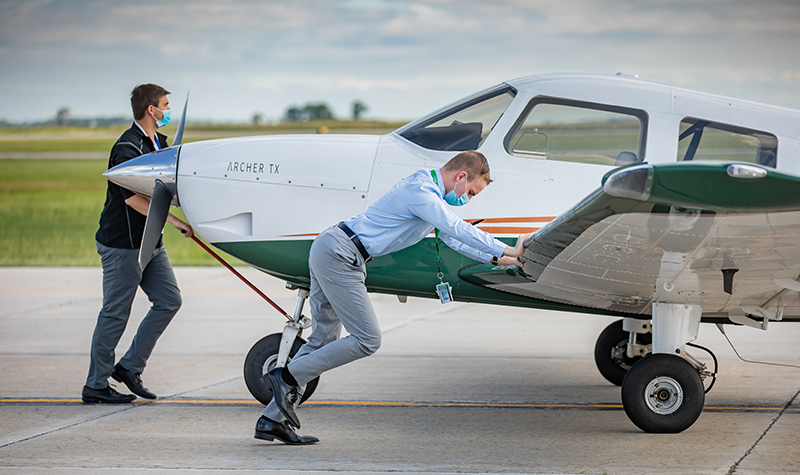
From his office at Grand Forks International Airport (GFK), Dick Schultz has a spectacular view of Charlie ramp. Most days, weather permitting, the area is bustling with Piper Archer airplanes and Robinson R44 helicopters that are constantly coming and going to serve hundreds of UND’s 1,400 flight students.
UND Flight Operations, which Schultz directs, dominates the eastern half of GFK’s layout. The string of flights humming to and from its Bravo and Charlie ramps and associated runways comprise 90 percent of traffic annually at the airport.
Such a percentage is exactly why the concrete foundations of those ramps – typically referred to as the “apron” of the facility – are of utmost concern to Schultz, his staff and the entire UND Aerospace community.
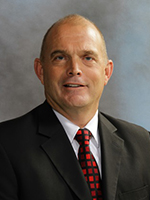
“Just as most colleges at UND have lab spaces they rely on for teaching and learning, these flight ramps are the labs of UND Aerospace,” Schultz remarked. “They’re much more than patches of concrete.”
The apron is where students and their instructors walk out to their assigned aircraft, work through pre-flight checklists and eventually embark on that day’s flight lesson, taxiing to the runway. And before that, UND staff members maintain and service each and every aircraft, ensuring they are ready and safe to take the skies. They tow each aircraft into and out of the hangar, to protect them from the elements, as well as make certain each aircraft is fueled and properly maintained.
And while steps have been taken in the past five years to keep the airport’s “labs” in good repair, there is still more work that needs to be done to keep students, staff and UND’s fleet of aircraft safe.
“Bravo ramp is in really rough shape and needs to be replaced,” said Schultz, referring to the immense amount of cracks, debris and overall weathering taken on by the 40-plus-year-old slabs of Bravo ramp, on the north side of UND’s Flight Operations Center.
“This infrastructural health is a matter of safety for our pilots, staff and equipment,” Schultz continued. “If we can’t maintain that, we can’t maintain our operational capacity.”
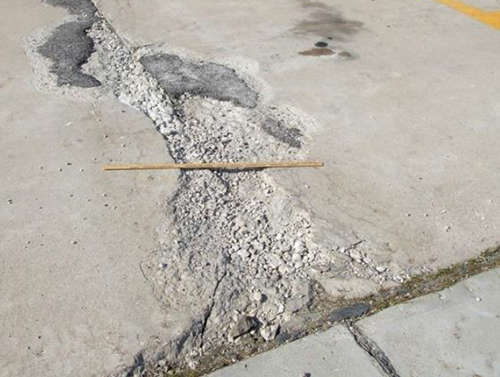
Crumbling concrete poses safety risks
One of the biggest safety concerns on the Bravo portion of the apron is known as “FOD” in the aviation community – foreign object debris, explained Professor of Aviation Kim Kenville. As concrete deteriorates and chips away, rocks and chunks start appearing where they shouldn’t – hence, FOD.
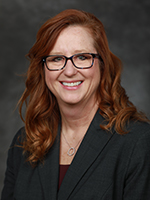
Given the amount of power generated by the operation of an airplane’s engine and propeller, there is a high risk that FOD could hurt not only an aircraft, but also a person or people on the flight apron.
“Think of the corners of your neighborhood’s sidewalks crumbling and becoming gravelly. Then, imagine what the forces of an airplane could do to that damaged concrete,” Kenville said. “The material underneath the aircraft is going to be sucked up by the prop and pushed off. It’s just like driving down the road and hitting a rock.”
Given UND’s commitment to flight safety through its 51-year history – including recently becoming the first collegiate flight program in the U.S. to achieve top-level conformance with the Federal Aviation Administration’s Safety Management System – Kenville and her colleagues are very concerned about leaving this crucial piece of infrastructure unaddressed.
And there are not only practical safety concerns related to deteriorating concrete, but logistical concerns as well. If the number of flights going in and out are impacted by infrastructure, the entire program is hurt.
“If we can’t continue to park airplanes on Bravo ramp, then we diminish our ability to train our students,” Kenville said. “We have a high utilization of our airplanes, and if it takes us longer to pull them from the hangar and move them around, that hurts the number of students getting flight hours and completing their education.”

Improvements to best the elements
Some of the problems that led to Kenville successfully championing a 2015 repair funding effort at the state level are not going away any time soon.
For example, GFK is built on poor soil, and that might be putting things lightly, according to Kenville. Year after year, following annual evaluations, GFK and UND Flight Operations hear from consultants that the alkali-rich and silty soil is some of the worst seen in the state.
“Our problem is that the soil holds water really close to the underside of the concrete,” Kenville said. “When all of that pavement was built in the 1980s, we didn’t know what we know now.”
The chemical composition of the soil and water essentially chews its way through the slabs, and the freeze-thaw cycle of North Dakota seasons exacerbates the foreign object debris that airport users see today. In 2015, the North Dakota Legislature granted $6 million of the $15 million funding request, and repairs were made to a portion of the area. The 2016 repairs to Charlie ramp ensured proper drainage to keep decay at bay, and the eventual replacement of Bravo would bring about the same type of improvement.
And the issue of funding is the same as it was five years ago, as well. Back in the 80s and up until the late 2000s, the FAA would have covered 90 percent of the costs of paving and repairing flight ramps such as UND’s. Now UND Aerospace and many other flight facilities nationwide find themselves in a tough spot, because the FAA no longer offers funding for “exclusive-use” ramps.
“We’ve argued until we were blue in the face that we’re a public institution and would let anyone else use the space, but the answer has consistently been no, from the FAA,” said Kenville.
“This is an unusual thing to pursue in the realm of funding higher education, but through our interactions and contact with legislators over the years, there is a better understanding of the situation,” Kenville continued. “And now our leaders know there is a relatively small amount of the apron left to fix, to see us through the next 30-40 years.”
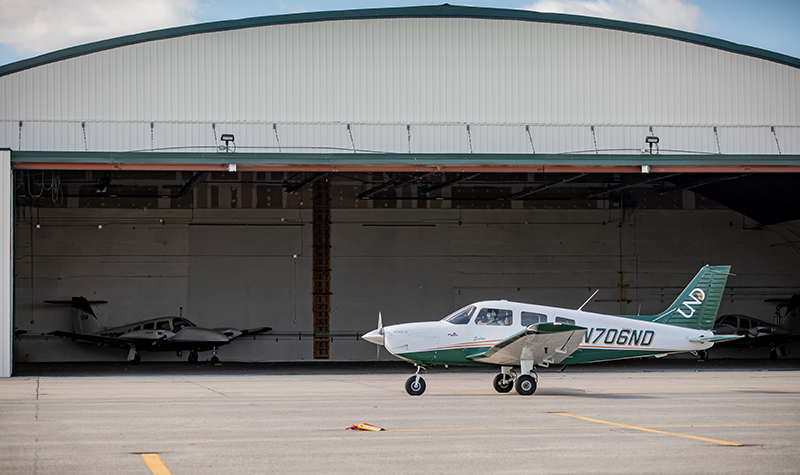
Ensuring UND’s flight leadership
Just as the flight ramp has seen better days, so have the buildings lining the apron, according to UND’s Facilities Management team.
Brain Larson, director of construction management, told UND Today that the groundwater issues and general degradation plaguing the apron also impact the entire facility, from the Flight Operations Center and hangars to the parking lots. Ultimately, those impacts hurt the student experience at a time when UND’s competitors are implementing facility upgrades, Larson said.
“We’re dealing with facilities at the end of their designed lifespan,” Larson remarked. “In the case of the Flight Operations Center, that’s a structure that has been repurposed and remodeled many times. The mechanical systems, plumbing systems, electrical systems and the building envelope itself are all at the end of their useful life.”
Other improvements in the works include those necessary for complying with the Transportation Security Administration’s ramp-access rules, as well as safety compliance with the FAA for aircraft storage.
Mike Pieper, associate vice president for facilities, stressed that with pilot demand reaching unprecedented levels for the long term – COVID-19 impacts notwithstanding – UND Aerospace needs to remain competitive and keep up its recruitment of top talent to the University. That means addressing the most significant safety and health concerns – such as apron gravel and other debris – as soon as possible while also planning much-needed structural replacements.
“UND Aerospace is the best flight program in the country,” Larson said. “We have the best faculty, and we certainly develop the best students here. The one piece that’s missing to keep us on top is the excellence in our facilities at the airport. This is really critical for us to stay as leaders in the industry.”



